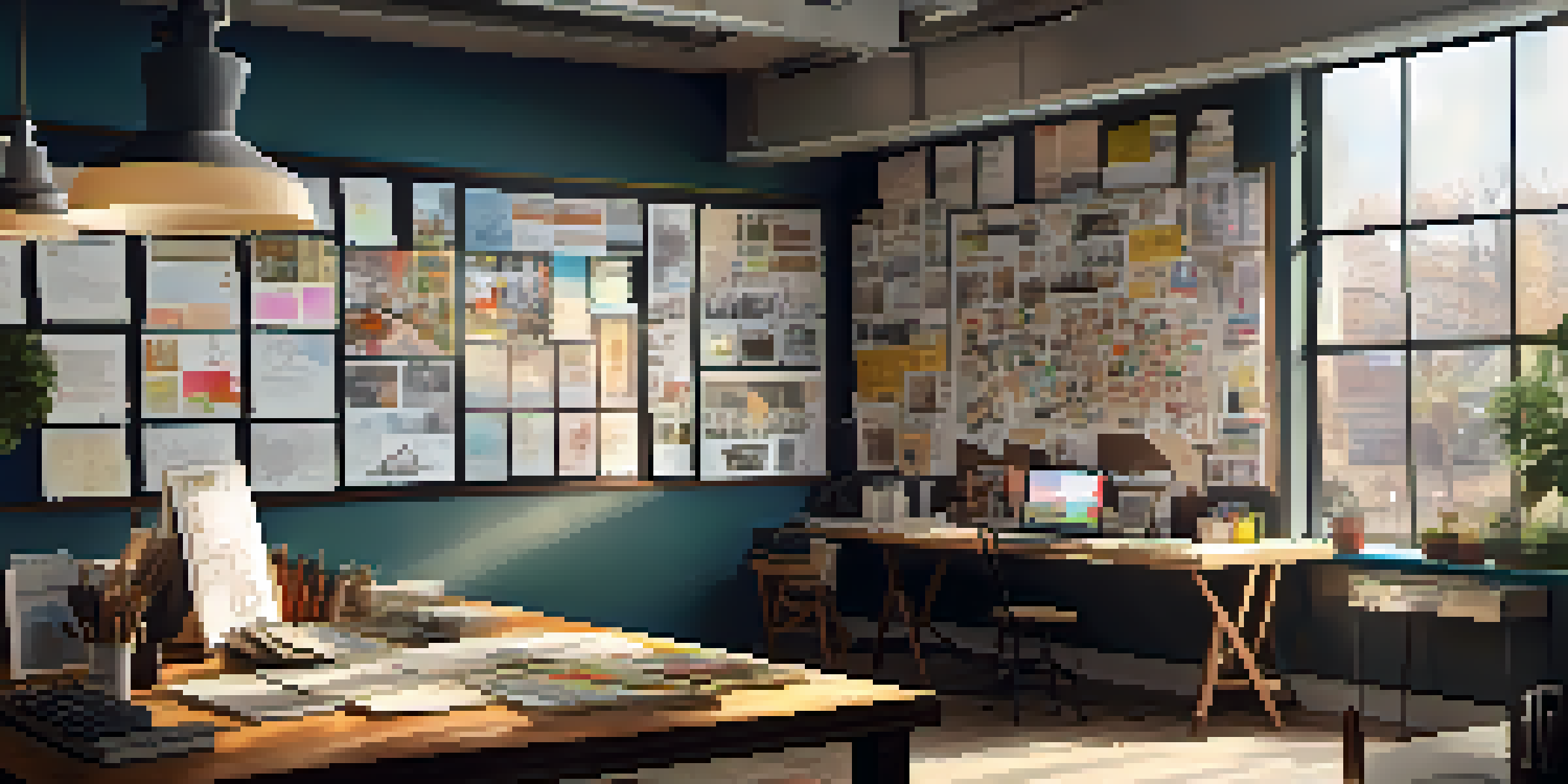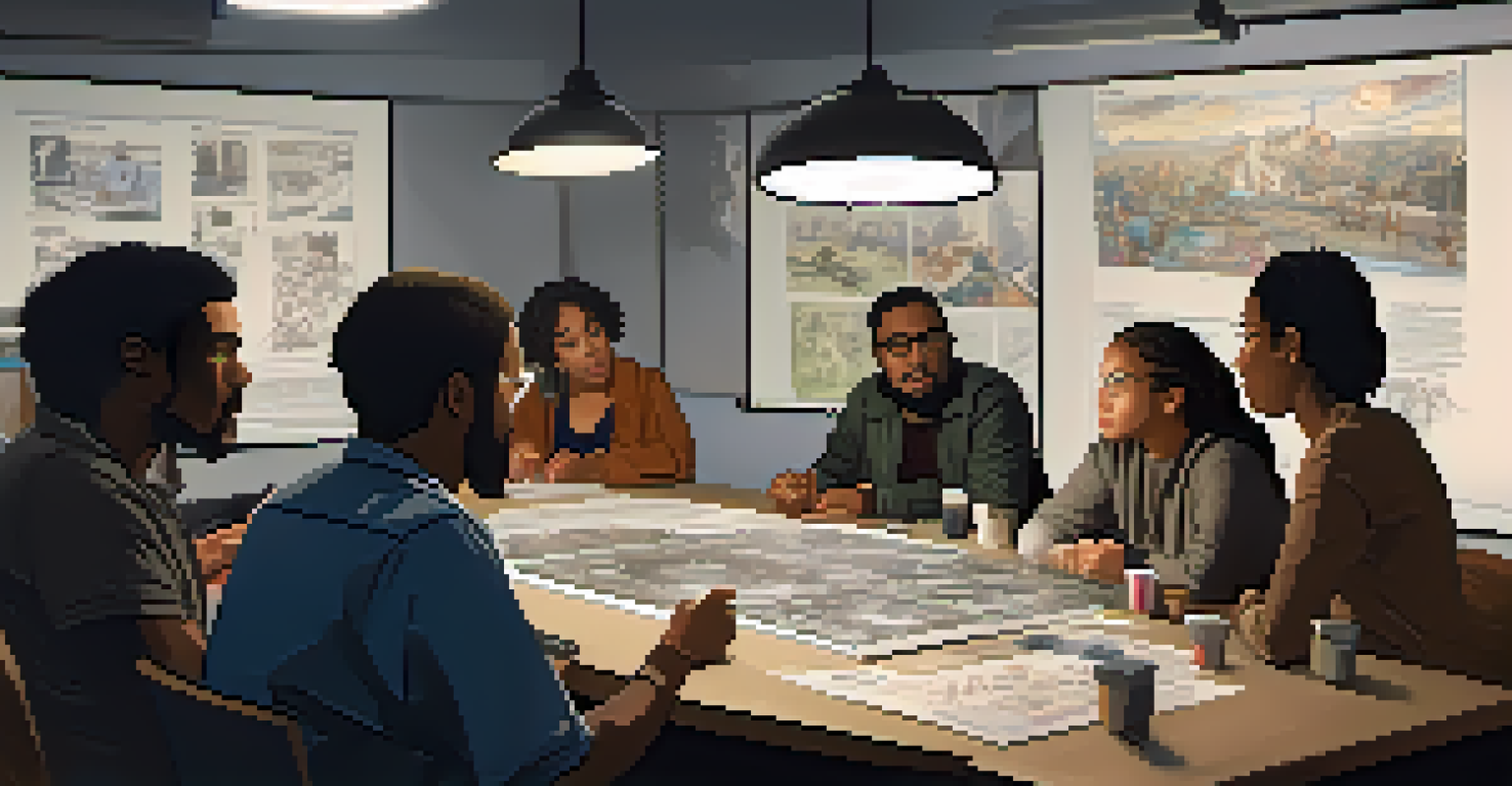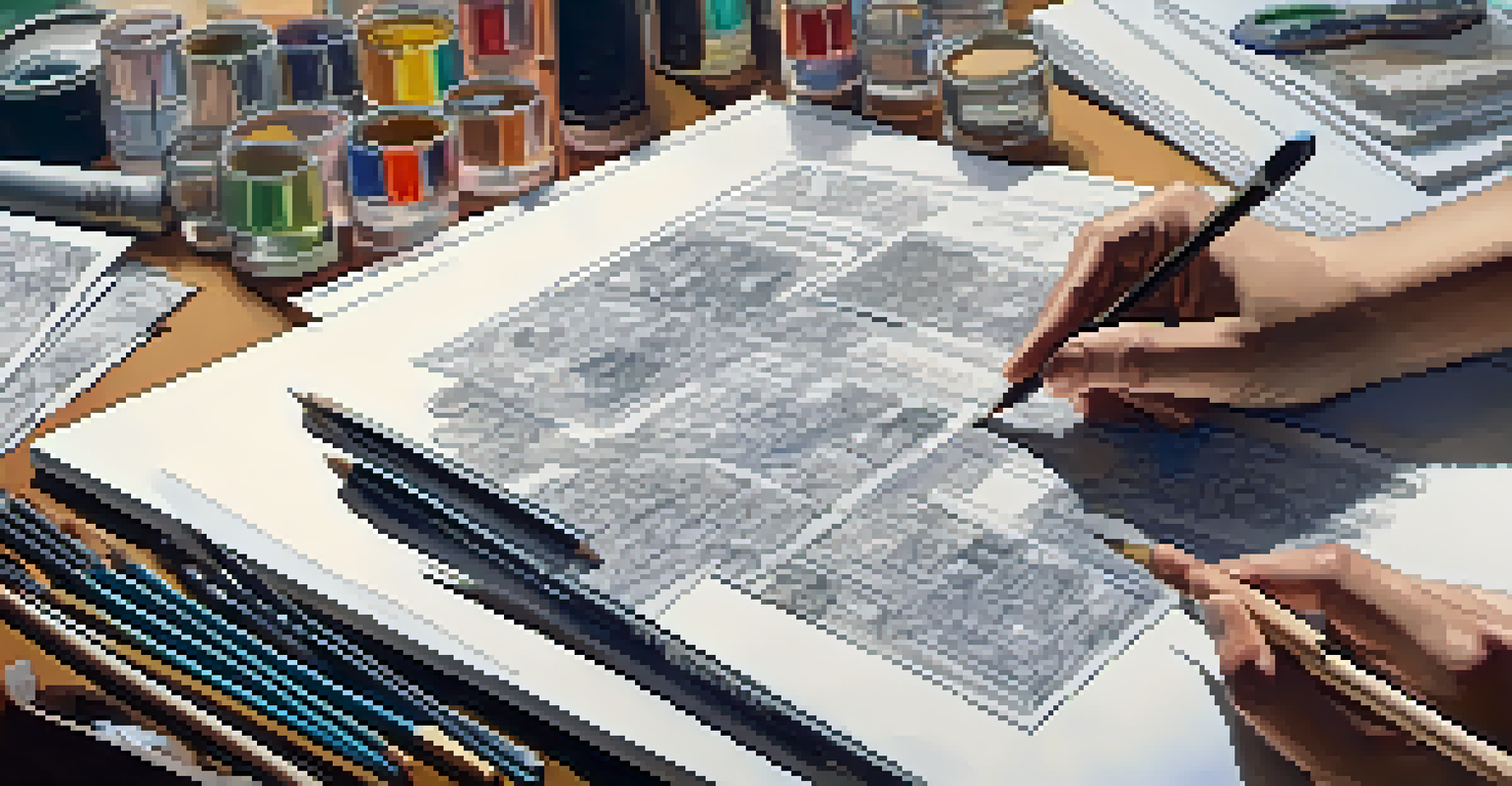How Storyboarding Can Save Time and Resources in Filmmaking

Understanding Storyboarding and Its Purpose
Storyboarding is the process of sketching out scenes in a visual format. It acts as a blueprint for filmmakers, allowing them to visualize how each scene will unfold. By mapping out the story in this way, directors and cinematographers can better understand the narrative flow and pacing.
A picture is worth a thousand words.
This technique is not just for animation; live-action films can benefit immensely from a well-structured storyboard. Think of it as a comic strip that illustrates the key moments of the film. Each frame provides insight into camera angles, character movements, and essential dialogue, making the filming process smoother.
In essence, storyboarding transforms abstract ideas into concrete visuals, facilitating better communication among the entire production team. With everyone on the same page, the likelihood of misunderstandings diminishes significantly, saving time in the long run.
Enhancing Collaboration Among Team Members
One of the most significant advantages of storyboarding is how it fosters collaboration among team members. When everyone can see the visual representation of scenes, it opens up discussions about potential improvements or adjustments to the narrative. This collaborative environment encourages creativity and innovation.

For instance, when directors, producers, and cinematographers review the storyboard together, they can pinpoint areas that may require more emphasis or detail. This teamwork not only hones the film's vision but also builds camaraderie, helping everyone feel involved in the creative process.
Storyboarding Enhances Collaboration
By visualizing scenes, storyboarding fosters teamwork and creative discussions among all production members.
Moreover, having a visual guide reduces the chances of miscommunication. Team members can refer back to the storyboard throughout production, ensuring that the original vision remains intact while still allowing for flexibility.
Identifying Potential Issues Early On
Another critical benefit of storyboarding is its ability to highlight potential issues before filming begins. By visualizing the scenes, filmmakers can spot plot holes, pacing problems, or even logistical challenges that might not be evident in a script alone. Addressing these concerns early can save significant time and resources during production.
Storyboarding is a way to visualize your film before you even shoot it.
For example, if a storyboard reveals that a particular scene may require elaborate special effects, the team can allocate the necessary budget and time upfront. This proactive approach ensures that everyone is prepared for the complexities of the shoot, ultimately leading to a more efficient workflow.
In addition, recognizing these issues early allows for more creative solutions. Filmmakers can brainstorm alternative ideas that fit within the visual framework, leading to a more polished and cohesive final product.
Streamlining the Filming Process
A well-crafted storyboard acts like a roadmap during the filming process. It provides a clear sequence of shots, making it easier for the crew to know what to set up next. This organized approach minimizes downtime and keeps the production on schedule, ultimately saving both time and resources.
Consider a film set where the team relies solely on verbal instructions. This method can lead to confusion, delays, and even forgotten shots. In contrast, a storyboard allows the crew to visualize each scene, making it easier to transition smoothly from one setup to the next.
Identifies Issues Before Filming
Storyboarding allows filmmakers to spot potential problems early, saving time and resources during production.
Additionally, storyboarding helps the director convey their vision to the actors more effectively. When actors can see the scenes visually, they can better understand their roles and how to portray their characters, leading to more compelling performances.
Budget Management Through Effective Planning
Storyboarding is an essential tool for budget management in filmmaking. By determining the visual elements needed for each scene upfront, filmmakers can allocate resources more effectively. This foresight helps to avoid overspending on unnecessary props, locations, or special effects.
For example, if a storyboard indicates that a scene requires multiple locations, the production team can plan logistics and costs in advance. They can negotiate permits or scout locations that fit within the budget while still achieving the desired look.
Moreover, having a visual plan allows for better time estimation, which is crucial for budget adherence. When time is managed well, costs related to overtime or extended rentals can be significantly reduced, contributing to overall savings.
Improving Editing Efficiency Post-Filming
Storyboarding doesn't just benefit the pre-production and filming stages; it also plays a crucial role in post-production editing. With a visual reference, editors can quickly locate the intended shots and sequences, saving valuable time during the editing process. This streamlined workflow allows for a more efficient editing phase.
Imagine an editor sifting through hours of footage without a clear idea of what was planned. It can be a daunting task that leads to frustration and delays. In contrast, a storyboard provides a guide, making it easier to piece together the narrative as envisioned by the director.
Streamlines Production Workflow
A clear storyboard serves as a roadmap, minimizing confusion and keeping the filming process organized and efficient.
Additionally, having a storyboard can lead to a more cohesive final cut. Editors can ensure that each scene seamlessly transitions into the next, maintaining the film's intended pacing and emotional impact.
Adapting to Changes with a Flexible Framework
While storyboarding provides a structured approach, it also allows for flexibility in the filmmaking process. Changes are inevitable, whether due to creative decisions or unforeseen circumstances. With a storyboard, filmmakers can easily adapt and modify scenes while still maintaining a clear vision of the overall narrative.
For instance, if a location becomes unavailable, the team can refer to the storyboard to find alternative scenes that can be shot in different settings. This adaptability ensures that production continues smoothly without losing sight of the film's direction.

Furthermore, this flexibility encourages creative exploration. Filmmakers can experiment with new ideas while having a solid foundation to return to, balancing spontaneity with intentionality.
Conclusion: The Value of Storyboarding in Filmmaking
In conclusion, storyboarding is a vital tool that can save time and resources in filmmaking. By providing a visual roadmap, it enhances collaboration, identifies potential issues, and streamlines the entire production process. The benefits extend beyond filming, improving budget management and editing efficiency as well.
Moreover, the adaptability of storyboarding fosters a creative environment where filmmakers can explore new ideas while staying true to their vision. It's a practice that allows for both structure and flexibility, ensuring that every aspect of the film is thoughtfully considered.
Ultimately, embracing storyboarding can lead to a more organized, efficient, and creative filmmaking experience. Whether you're a seasoned filmmaker or just starting, incorporating this technique can significantly elevate your production process.